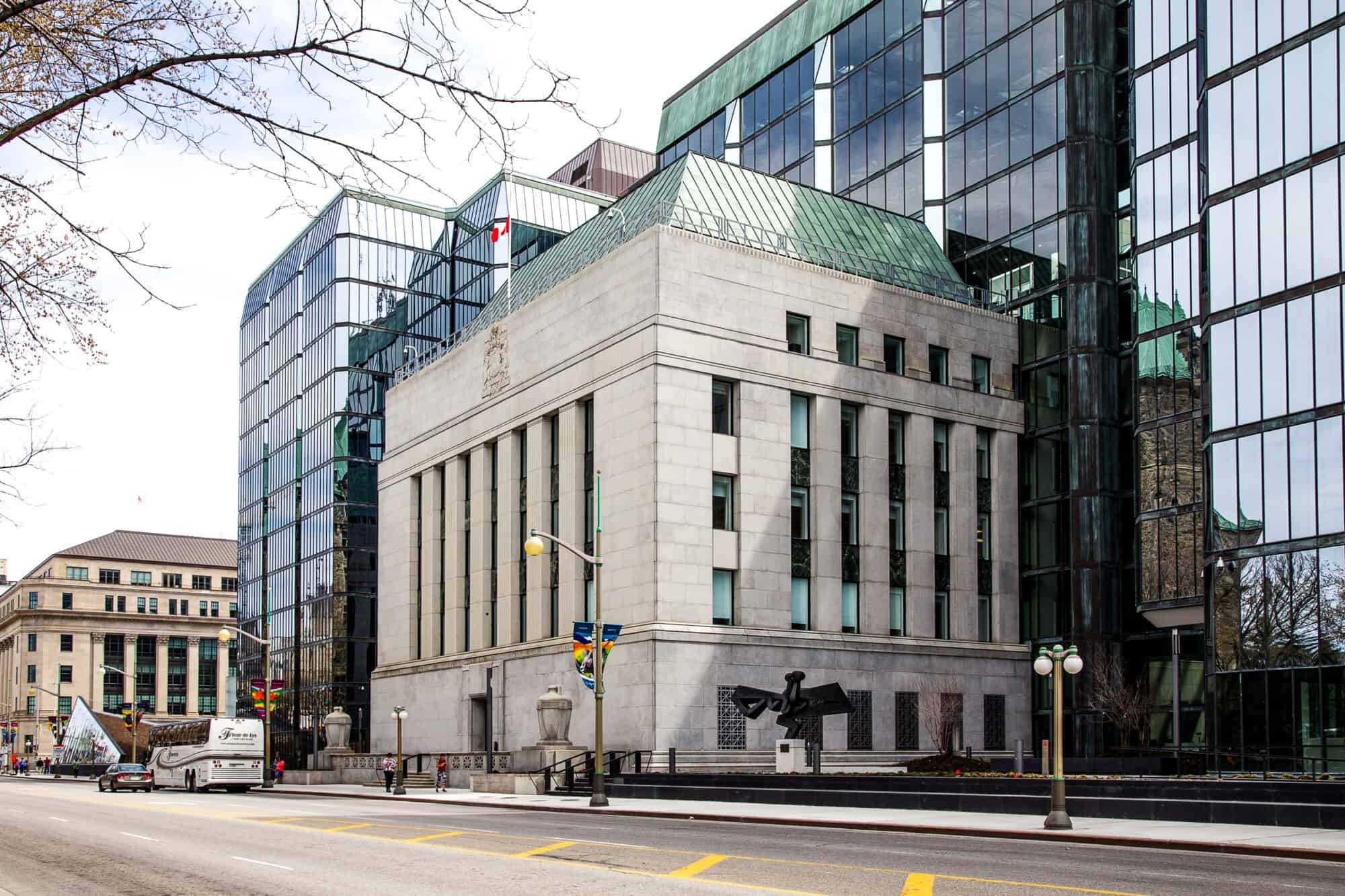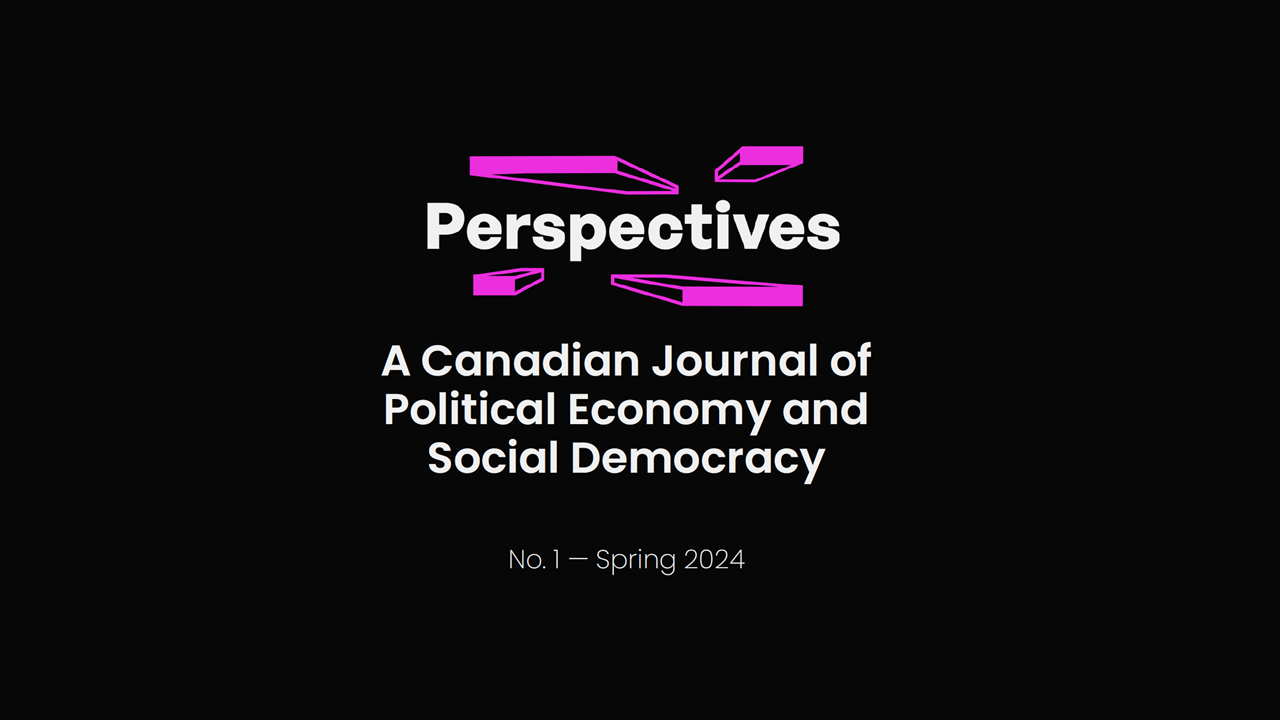After years of reporting on the activities of central bankers being confined to the business section in the back pages of most newspapers, things have appeared to have recently changed.
It started off in May of 2022 when Pierre Poilievre, then a Conservative leadership candidate, said he would fire the Governor of the Bank of Canada if he became Prime Minister because he believed that the Governor was not doing enough to reduce inflation and boost the purchasing power of the Canadian dollar.[1] But, the criticism of Canada’s central bank by politicians didn’t just come from the right of the political spectrum. Soon after Poilievre made his comments, NDP Leader Jagmeet Singh criticized the Bank of Canada for concentrating too heavily on fighting inflation and ignoring how its steep and rapid interest rate hikes were creating unemployment and possibly pushing Canada into a recession.[2] Then, in September of 2023, politicians in government got into the act. The Conservative Premier of Ontario, the NDP Premier of British Columbia, and the Liberal Premier of Newfoundland and Labrador separately sent letters to the Bank of Canada outlining their concerns about the negative effects of high interest rates on their provinces’ economies and asking the central bank not to raise rates any further.[3]
By this time, the Bank of Canada had enough. Tiff Macklem, the Governor of the Bank of Canada, chastised the Premiers for their letters saying that they were putting the “operational independence” of the central bank at risk.[4] Subsequently, when Finance Minister Chrystia Freeland meekly suggested that the Bank of Canada deciding to hold interest rates at 5% at the beginning of October 2023 was “a welcome relief for Canadians,” she was roundly criticized by mainstream economists and business journalists for meddling with the Bank’s cherished independence.[5]
When it comes to Canadian politicians commenting on the Bank of Canada’s actions, the institution appears inoculated from all criticism concerning its policy choices by asserting the sacrosanct nature of its “independence.” But it doesn’t have to be this way.
In this piece, I will argue that the doctrine of what I call “absolute central bank independence from politics” goes too far. Indeed, this doctrine was the invention of monetarist economists as a reaction against the way that social democrats had traditionally understood the role of government in the economy. Social democrats should want to subject the decisions of central banks to strenuous democratic oversight and criticism by the elected politicians who are accountable to voters in order to ensure that our economy is controlled in the interest of the common good. Without completely taking away the independence of the Bank of Canada, it is my view that some modest reforms to the Bank’s mandate and internal governance should be made. The result of these reforms would be to increase the likelihood that political pressure can push the Bank of Canada away from its current singular obsession with inflation targeting to a broader view of how monetary policy can be used to achieve social democratic aims related to higher economic growth, a fair distribution of wealth, environmental sustainability, and social justice.
Central Bank Independency, Social Democracy, and Monetarism
The recent comments by Singh, Poilievre, Freeland, and the three Premiers need to be put into the historical context of the evolution of social democracy as an ideology in the early 20th century and the emergence of monetarist economics near the end of the 20th century.
With the onset of the Great Depression in the late 1920s, reform of the banking system became a major talking point for social democrats in all English-speaking countries, including Canada. They blamed private banks and ineffectual government-controlled central banks for causing the depression since these banks often made credit easy to get during good economic times, and restricted access to credit in times of economic downturn, thereby unnecessarily prolonging sluggish economic growth. As such, the traditional social democratic view of banking never included the idea of central banks being “independent” from politics. In the decades following the Great Depression, social democrats wanted the government to step in and ensure easy access to credit to prevent another depression from taking place, even if that meant ordering central banks to lower their lending rates or creating government-owned commercial banks that would compete with private banks by providing the very low interest rates needed to boost economic growth.
The doctrine of what I call “absolute central bank independence from politics” is simply the assertion that a country’s central bank should not be controlled in any way by its politicians- beyond the government periodically giving the central bank a very general set of goals and appointing central bankers for several years at a time. According to this doctrine, politicians should even go as far as refraining from commenting on the actions of the central bank to ensure that it maintains a reputation for acting completely outside of the realm of political influence and so that it is not seen as taking political factors into account when it makes decisions.
It is important to note that this doctrine has its roots in monetarism, not social democracy. In fact, the doctrine of “absolute central bank independence from politics” appears to have originated in a 1962 essay by Milton Friedman, who is generally considered the father of monetarist economics.[6] He critiques what he calls the “irresponsible government tinkering” with monetary policy that was advocated by social democrats during the postwar era.[7] In this sense, the origin of the concept of central bank independence is a critique of social democratic ideas prevalent during the middle part of Friedman’s career.
However, the emphasis on central banks needing absolute independence from politics did not gain popularity around the globe until it became part of the trend toward monetarist economics in the 1980s and 1990s embraced by neo-conservative politicians like Ronald Reagan and Margaret Thatcher. Though, it should be noted that Third Way social democrats like Roger Douglas in New Zealand, Paul Keating in Australia, and Tony Blair in the United Kingdom also were in favour of central bank independence and made reforms to move their countries’ central banks in that direction.
The principal reason given by the monetarists for central bank independence was that central banks would never make the tough decisions needed to bring down inflation if they were subject to political pressures and hyperinflation would ensue. A lot of weight was also placed by monetarists on central bank creditability- insulating central banks from political pressure would enhance the level of trust of businesses and customers that the bank will do all that it takes to maintain price stability and lower inflation. This reduced uncertainty around inflationary pressures supposedly would encourage investment and consumption, contributing to higher economic growth.
However, the evidence that central bank independence is the magical bullet for creating economic growth and keeping inflation down is inconclusive. A 2016 study by Garriga that measured the independence of central banks in 182 countries from 1970 to 2012 and found that the positive association between central bank independence and high economic growth is “very sensitive to sample selection.”[8] Furthermore, a 2021 study by Baumann, Schomaker, and Rossi argues that there is only a weak causal link between reduced inflation and central bank independence and that “a strong inflation-boosting impact from introducing central bank independence cannot be ruled out.” [9] So, the positive attributes of central bank independence heralded by the monetarists seem to be drastically over-estimated.
Central Bank Independence and the Undermining of Social Democracy
There are downsides to central bank independence from a social democratic point-of-view.
A key part of social democratic ideology is control of the economy by the community through the actions of its democratically elected representatives. Social democrats want to place the economy and the free market under democratic control so that pressure from the average people, who are voters in a democracy, ensures that governments regulate the economy in a way that creates prosperity for all, not just the very rich. For this reason, social democrats, prior to the ascendence of monetarism, spent little time worrying about so-called political interference on the actions of their countries’ central bank. For them, direct government instructions to the central bank were a good thing because they were a way of ensuring the democratic control over capitalism that would promote the common good.
In terms of social democracy, the principal downside of central bank independence in the 21st century is that it prevents community control of the economy through the democratic oversight of a key economic institution in our society. In the Canadian case, the Bank of Canada’s governance structure is purposefully set up to shield it from popular pressure. The Board of Directors is appointed by the federal cabinet to three-year renewable terms, and in turn, the Board of Directors appoints the Governor and the Senior Deputy Governor of the Bank of Canada for seven-year terms (though, both appointments need formal approval by the federal cabinet). The high level of security of tenure of the Bank of Canada’s senior management and the convention that Canadian politicians refrain from publicly criticizing the Bank’s actions means that Canada’s central bank is democratically unaccountable. It undoubtedly considers how financial markets, investors, and customers will react to its decisions, but there are very few mechanisms to ensure that it considers what political representatives, and the citizens that elect them, think of its actions.
What is the consequence of this absolute central bank independence for the average Canadian? In my opinion, the consequence has been that the Bank of Canada generally concentrates too much on fighting inflation and has not focused enough on the real human consequences of high interest rates in terms of unemployment, slow economic growth, and soaring mortgage rates. Surveying 121 countries during from 1971 to 2015, Altunbas and Thornton illustrate that central banks focusing all of their activities exclusively on fighting inflation was “associated with a worsening of income distribution measured by the Gini coefficient and a decline in the labor share of national income relative to the profits share.”[10] Basically, the authors are saying that the level of interest rates set by a country’s central bank matters a lot. When central banks raise interest rates because they are solely concentrated on reducing inflation above all else, the gap between rich and poor widens. If the actions of our central bank have such important consequences on the daily lives of all Canadians, shouldn’t there be some democratic control over the Bank of Canada? Shouldn’t the democratically elected representatives of the Canadian people have some say in what the Bank of Canada does?
Overall, the evidence points to central bank independence undermining, as opposed to promoting, the aims of social democracy. This is unsurprising given that central bank independence is a concept that originates from monetarist economic thought and its general critique of postwar social democracy.
A Social Democratic Re-evaluation of Central Bank Independence in the 21st century
Third Way social democrats in the 1980s and 1990s in several western countries simply accepted the “absolute central bank independence from politics” doctrine without much reflection. It was a way to signal their ideological moderation and show that they had turned away from the overbearing statism of social democrats in their countries during the postwar era. So far, in early 21st century, social democrats have neglected to elaborate on their thoughts on central bank independence. This lack of reflection may be understandable given two decades of historically low inflation while central banks pursued rock-bottom interest rates and a regime of quantitative easing.
However, as COVID-19 pandemic induced inflation upends this situation and greater economic pressures is brought to bear on ordinary Canadians, now is the time to re-evaluate social democracy’s views on central bank independence. This re-evaluation needs to start off by exploring how to create stronger political influence on the Bank of Canada, even if that influence would contradict monetarism’s fetish with absolute central bank independence.
We do need to consider the importance of intense competition for foreign direct investment as a source of jobs and economic growth for Canada. The 2023 announcement by BHP in expanding potash protection in Saskatchewan is an example of this type of beneficial foreign direct investment. Such positive foreign direct investment is difficult to attract in a country where politicians are constantly over-ruling the central bank to promote excessive credit expansion or to print too much of their own currency, thereby destabilizing Canada’s international exchange rates. Furthermore, if only politicians were in control of monetary policy, there may be tendency to delay tough decisions around increasing interest rates that could nip inflation in the bud and avoid tougher actions later down the road when inflation has got more out of control. With the absolute power to produce inflation, or even deflation, to suit electoral prospects politicians could induce damaging long-term economic adjustments on ordinary Canadians for short-term political gains.
For the above reasons, some independence for the Bank of Canada is certainly needed. However, what is not needed is the absolute independence of central banks advocated by monetarism. There are ways to assert more democratic and political control over the interest rate policy of Bank of Canada that fall well short of nationalizing all private banks or making the Prime Minister or another cabinet minister the Governor of the Bank of Canada. With a little ingenuity, we can find ways to reduce the independence of the Canada’s central bank without excessive political interference, much like the accountability mechanisms imposed on other Crown Corporations of the federal government like Via Rail or Canada Post.
Legislative changes coming out of the Coyne Affair[11] in the late 1950s made it clear that the federal government is ultimately responsible for monetary policy, with the Bank of Canada responsible for the day-to-day conduct of policy. In the event of an irreconcilable policy disagreement between the Bank and the federal government of the day, the federal government’s only recourse is to issue a public directive to the Bank, an act which would cause the Governor of the Bank to resign. This has meant that, to avoid this embarrassing outcome, the Bank and the federal government have maintained enough communication with each other to ensure that they were at least somewhat on the same page when it comes to monetary policy and no public directive would ever have to be issued. In many ways, I think that what is needed are reforms to increase and deepen the minimal collaboration and consultation between the government and the Bank of Canada that is already taking place.
Let’s start with the length of the Bank of Canada’s mandate. Every five years, the federal government signs an agreement with the central bank, mandating the terms of the goals that it should pursue. However, as recent experiences with multiple crises demonstrates, a lot can change in five years. Renewing and reviewing the Bank of Canada’s mandate annually would permit democratically elected representatives to set out their expectations of the Bank of Canada more frequently and push for those expectations to be met in a timely manner.
The actors that review and renew the Bank of Canada’s mandate should also be up for reconsideration. Currently, the Minister of Finance is the sole government official that handles this review. If the Bank of Canada’s mandate is to face an annual review like the budgets and activities of other Crown Corporations do, let’s have it reviewed periodically by a committee of the federal finance minister along with a group of federal ministers with economic portfolios. For good measure, MPs in the House of Commons could be included in the review process as members of legislative committees. For instance, the House of Commons’ Standing Committee on Finance could hold hearings in the lead up to the annual review of the Bank of Canada’s mandate to make recommendations about what the Bank’s mandate should look like for the upcoming year. Without making Parliament and the federal cabinet responsible for setting the Overnight Lending Rate and other parts of Canada’s monetary policy, these reforms would give the Bank of Canada a set of annual directives from Canadian federal politicians to guide it in carrying out those duties, just as there are directives to other federal agencies and Crown Corporations.
Another way to exert more popular political pressure on the Bank of Canada is to look at its internal governance. Right now, the Deputy Minister of Finance sits as an ex- officio non-voting member of the Board of Directors of the Bank of Canada. Additional federal cabinet ministers ought to become voting members of the Board of Directors of the Bank Canada to bring much-needed political perspective to its meetings to consider the situation of ordinary working-class Canadians, instead of the interests of business, when they make their decisions around interest rate policy.
Additional cabinet participation could serve as a critical watchdog on the Bank of Canada’s Board of Directors if policy choices begin to stray from the original mandate set by the federal government. If this reform exposes disagreements within the Board of Directors over monetary policy, I don’t see how this is a problem. A recent “Summary of Deliberations” of the Boards of Governors released on October 25, 2023, revealed a split among the Governors over whether further interest rate increases will be necessary.[12] The news of disagreement among the Board of Governors of the Bank of Canada was not a bombshell that caused our stock market to crash and our economy to tank.
Finally, I am not in favour of Poilievre’s Trumpian idea of shouting “You’re fired!” at the Governor of the Bank of Canada if their actions go against the will of the Prime Minister. While it is not currently against the law for the Prime Minister to summarily dismiss the Governor of the Bank of Canada in the middle of their term,[13] this should be done only in the most extreme of circumstances and be considered to be a bad practice that would likely create chaos and confusion more than anything else. That being said, it would be a good idea to re-think the appointments process for the Governor, Deputy Governor, and Board of Directors of the Bank of Canada. Instead of having the Board of Directors being appointed by cabinet on three-year renewable terms, the Board of Directors could be appointed by cabinet on one-year renewable terms with a term limit of five years. Rather than the Governor and Deputy Governor being appointed for seven years by the Board of Directors and then having those appointments be rubber stamped by the federal cabinet, these two important positions could also be appointed by the federal cabinet on one-year renewable terms with a term limit of five years.
Further, there are possibilities to involve a committee of the House of Commons composed of representatives of all recognized parties in the appointments process. Cabinet could submit a short list of potential nominees to such a committee for public comment, while the federal cabinet retains its ultimate power of appointment. The involvement of a House of Commons committee in cabinet’s appointment for the Bank of Canada is similar to what was envisioned, but never implemented, by the Paul Martin government for its appointments of Supreme Court Justices in mid-2000s.[14]
Overall, a shorter time period between appointment renewals could increase the accountability of the directors and governors of the Bank of Canada to the cabinet and the House of Commons. Members of the Bank of Canada’s management team would surely feel more pressure to take the views of elected representatives into account if they are facing annual renewal. Lastly, term limits of only five years would give the federal cabinet and members of the House of Commons more opportunity to change the make-up of senior management at the Bank of Canada ensuring a more regular influx of new ideas.
Conclusion: Moving towards Multiple Mandates?
In my opinion, a very desirable outcome of the reforms outlined above would be to decrease likelihood of the Bank of Canada adopting a singular mandate of focusing all of its actions on achieving a target inflation rate with little regard for other considerations (what is known as “inflation targeting”). There are ongoing debates whether the “arbitrary” 2% inflation target that the Bank of Canada and other central banks have used for more than two decades is even sound, evidence-based policy.[15] There has been lots of discussion of a need for a dual mandate for the Bank of Canada that gives equal consideration to how its monetary policy will fight inflation and contribute to higher employment.[16] Indeed, sixty-one economists recently signed an open letter to the Bank of Canada urging it to consider full employment, and not only inflation, when it sets interest rate policy.[17]
While the move away from the Bank of Canada’s current obsession with inflation targeting towards a dual mandate would be welcome, we might even want to go further. Policies to increase financing for climate action, achieving a more equitable distribution of wealth, or improving labour market outcomes for Indigenous Canadians and racialized minorities could be included in the mandate of the Bank of Canada. The singular focus on inflation targeting could be replaced with multiple mandates for our country’s central bank.
In conclusion, I am convinced that there must be some sensible reforms that can be done to allow political pressure to be routinely placed upon the Bank of Canada. Such reforms should not completely undermine the independence of the Bank of Canada and prevent its officials from occasionally ignoring political pressure around interest rate policy in order to make tough decisions that wrestle inflation down. However, increased political pressure on the Bank of Canada will cause it to be more aware of the social consequences of its actions. And, because of increased influence of democratically elected representatives, I think that the Bank would become more prone to changing its policies in response to legitimate and well-founded criticism. In short, the Bank of Canada would become more accountable to the public and more accountable to the democratic institutions of Parliament and the federal cabinet leading towards monetary policy that would genuinely pursue social democratic aims.
Notes
Click to expand for a full list of notes.
[1] https://financialpost.com/news/economy/trudeaus-tory-rival-says-hed-fire-bank-of-canada-governor
[2] https://www.cbc.ca/radio/asithappens/jagmeet-singh-bank-of-canada-1.6630765
[3] https://www.theglobeandmail.com/business/article-ontario-bc-premiers-urge-bank-of-canada-to-halt-rate-hikes-ahead-of/
[4] https://www.theglobeandmail.com/business/article-macklem-warned-premiers-against-undercutting-confidence-in-bank-of/
[5] https://www.cbc.ca/news/politics/freeland-bank-of-canada-interest-inflation-1.6958163
[6] https://www.cato.org/cato-journal/winter-2020/fresh-look-central-bank-independence#
[7] https://www.degruyter.com/document/doi/10.4159/harvard.9780674434813.c9/pdf
[8] https://papers.ssrn.com/sol3/papers.cfm?abstract_id=2928897
[9] https://cepr.org/voxeu/columns/central-bank-independence-and-inflation-weak-causality-best#:~:text=This%20column%20argues%20that%20overall,independence%20cannot%20be%20ruled%20out. https://papers.ssrn.com/sol3/papers.cfm?abstract_id=2928897#:~:text=This%20article%20introduces%20the%20most,Cukierman%2C%20Webb%20and%20Neyapty%20index
[10] https://research.bangor.ac.uk/portal/files/51458340/Does_inflation_targeting_increase_income_inequality.pdf
[11] In 1959, Prime Minister John Diefenbaker tried to fire Bank of Canada Governor James Coyne over disagreements with him about the direction of Bank’s monetary policy, his gloomy speeches on the state of Canadian economy, and the size of his pension. While Diefenbaker was not able to fire Coyne before he resigned, his government subsequently made changes to the Bank of Canada Act outlining what could happen in the event that the federal government and the management team of the Bank of Canada had an irretractable policy disagreement. See https://www.jstor.org/stable/40800725
[12] https://www.cbc.ca/news/business/bank-of-canada-deliberations-1.7022481
[13] https://www.administrativelawmatters.com/blog/2022/09/13/could-a-prime-minister-poilievre-fire-the-governor-of-the-bank-of-canada/
[14] https://www.constitutionalstudies.ca/2019/06/supreme-court-appointment-process-and-the-prime-minister-of-the-day/?print=print
[15] https://www.project-syndicate.org/onpoint/is-2-really-the-right-inflation-target-for-central-banks#:~:text=But%20while%202%25%20is%20viewed,is%20a%20relatively%20recent%20phenomenon.
[16] https://www.cbc.ca/news/business/bank-of-canada-mandate-1.6283648
[17] https://www.progressive-economics.ca/2018/06/the-bank-of-canada-should-target-full-employment-and-inflation/







